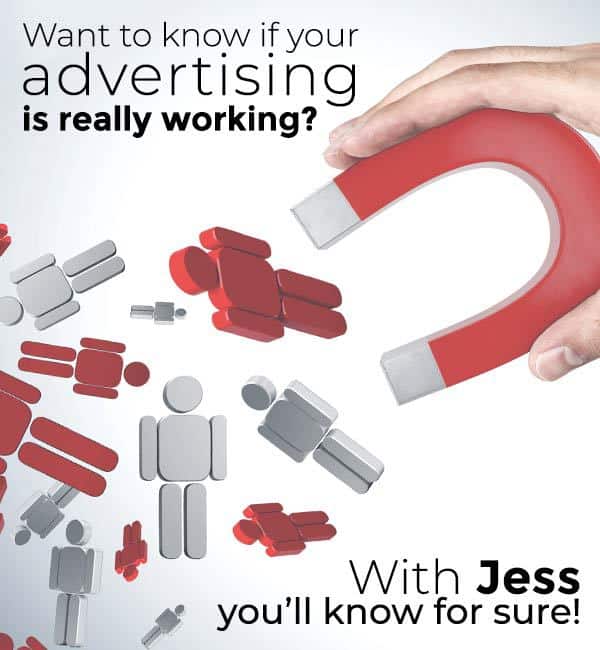In our first post, we defined the most common and important terms you see in marketing reports. What follows is a “cheat sheet” to help you know where to look, how to quickly identify problems, and which metrics are interconnected.
Cost
The first thing you want to review is how much you spent. There is nothing worse than the sinking feeling you spent too much, especially if you have been spending too much for months! You’ll want to compare how much you spent to how much you budgeted to spend. While it’s almost impossible to spend your exact budget, you’ll want to make sure the variance is low.
If you missed the mark by more than a small amount, start by reviewing the budget you set in your marketing platform and make sure it is correct.
Underspending can be caused by a variety of things other than a budget that was set too low. If you are bidding manually or are using automated bidding and entered a maximum bid, you may need to raise your bids. If your bid is much lower than your competitors’ bids, your ad just won’t get impressions, which means you won’t have the opportunity to get clicks and spend your budget.
If your remarketing campaigns are underspending, check to make sure your remarketing audiences are active and that there are users in your remarketing audience. Keep in mind that it takes some time to ramp up new remarketing campaigns. You need at least 100 people in your remarketing list for your ads to show.
Clicks
You’ll want to see how many clicks you got compared to the previous period and previous year, if available. Ideally, the total number of clicks is the same or higher. Several factors can significantly affect the number of clicks you are getting, including significant changes to your budget and cost per click. Lowering your budget or increasing your bids reduces the number of clicks you can afford. On the other hand, raising your budget or reducing your bids usually results in getting more clicks.
Impressions
Impressions gives you feedback about the total number of times your ads are appearing and therefore, the volume of clicks available for a given search, display, or social media campaign.
Unless you are more concerned about branding than clicks to your website or conversions, impressions are not as important to track as the number of clicks or conversions you are generating. It’s not uncommon to see sizable swings in the number of impressions even when you don’t make any changes to your account. If your clicks and conversion are healthy, don’t worry about a major change in impressions. If you are concerned about impressions, you might be able to change your audience or raise your bids to increase impressions.
Clickthrough Rate (CTR)
All things being equal, a high clickthrough rate means that your ads are resonating with your audience. That said, CTR in search campaigns is impacted by your budget and how much you can afford to pay per click. As you raise your cost per click, you will be more likely to appear in the search results positions that appear at the top of the page. Since they appear before any local or organic search results, these positions generate the highest CTRs.
Keep in mind if you have a limited budget, meaning you don’t have a large enough budget for your ads to appear for all of the ad impressions and clicks available, you might be able to get more clicks with lower bids, which will decrease your CTR. Generally, it’s OK to see a drop in CTR if it means you are increasing your clicks or conversions. For example, if you have a budget of $25 per day, and you want to generate as much traffic to your site as possible, you are better off getting 25 clicks at a CPC of $1.00 with a CTR of 5% than 20 clicks at a CPC of $1.25 with a CTR of 7%. While the CTR declined in this example, the total number of clicks increased by 5, or 25%.
Average Cost-Per-Click (CPC)
It’s ideal to see the CPC stay steady or decline. However, it’s not always possible. Your Average CPC will be impacted by how much you have budgeted and how many other advertisers are competing against you for the keywords you are targeting. Large increases or decreases in CPC require investigation.
Over time, you should expect to pay more per click. For example, you shouldn’t be surprised to see double digit percentage increases in CPC year over year.
Conversions
If your main goal is to generate leads and sales from your marketing, conversions are the most important metric to look at, after cost. The more conversions, the better, provided you are achieving them at an acceptable cost per conversion.
If you don’t see any conversions, make sure conversion tracking is set up properly. Be sure to set up meaningful conversions that track leads. It is possible to set up conversions to track any user activity, but keep in mind that conversions that track when prospects request information, call you, or provide you with an email when they download a gated asset are most valuable.
In the Google Ads platform, you may also see data for All Conversions. This data includes conversions you have set up to track, as well as other conversions Google considers among “all the conversions that that Google Ads drive for your business.” For example, All Conversions includes requests for driving directions in Google My Business listings, calls that are placed after your ads are viewed, and visits to your physical location.
Cost/Conv.
Ideally, you would like to see your Cost per Conversion stay the same or decline. However, click inflation, or an increase of the average cost per click over time, can lead to an increased cost per conversion.
The overall goal of paid ad management when the objective is to generate leads or sales is to get the most conversions at an acceptable cost per conversion. If you’re Cost per Conversion is too high, you’ll want to reduce bids for keywords that are converting, but at a high cost. If you are limited by budget, you might be able to squeeze more out of your campaign by lowering bids.
Conversely, if you can afford a higher Cost per Conversion, you might be able to generate more business by increasing your ad budget and increasing bids for keywords until you reach your target Cost per Conversion.
Search Impression Share (SIS) or Display Impression Share (DIS)
How much SIS or DIS you earn is affected by your budget and how well you manage your Cost per Click.
If you have a low SIS or DIS but are getting conversions at an acceptable Cost per Conversion, raising your budget in these campaigns can help you generate more conversions.
Have your bosses (or clients) ever asked you why ads didn’t appear when they searched for a particular keyword? Unless you have a very high budget, your SIS/DIS will never be 100%. Assuming you are bidding on the keyword, you can tell them to rest assured the campaign is running. Provide SIS data to explain why the ad won’t appear all the time.
Confused? We really want you to understand this stuff! Ask a question below.
To receive tutorials like this delivered right to your inbox, please subscribe to our newsletter.



0 Comments